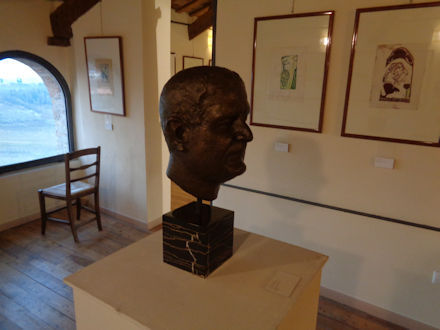You may not find this terribly rewarding unless you're included here, so this is a good time for casual and random browsers to turn back before they get too caught up in the sweep and majesty of the proceedings and can't let go.
We've spent several days based in Montegiardino in San Marino, madly seeing as many of the regional sights as possible. Now it's time to move a little north of San Marino and set up camp in tiny hilltop Longiano (20 December 2017).

Maybe it's not a good day to be traveling.
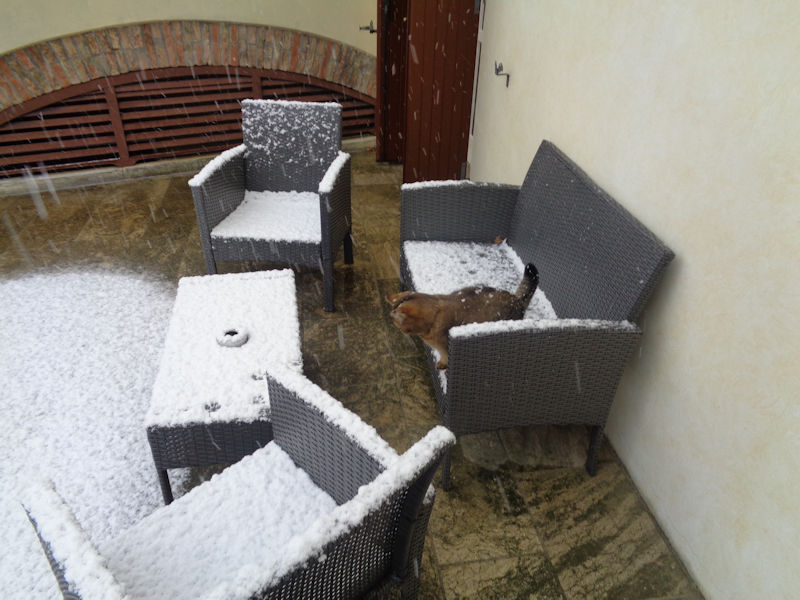
This is probably Melvin's first look at snow, no wonder he's doubtful . . .
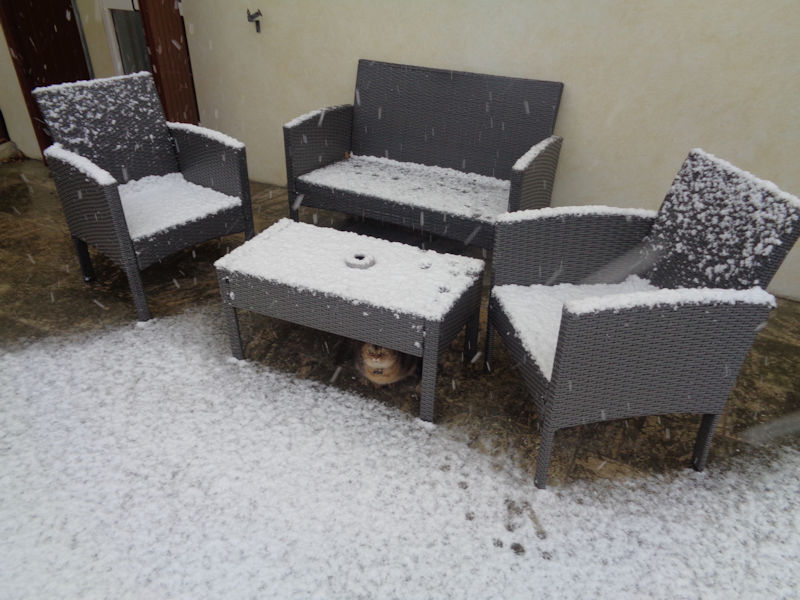
. . . but his instincts are correct.

Leaving the Palazzo Mengozzi and the Modà Antica Locanda
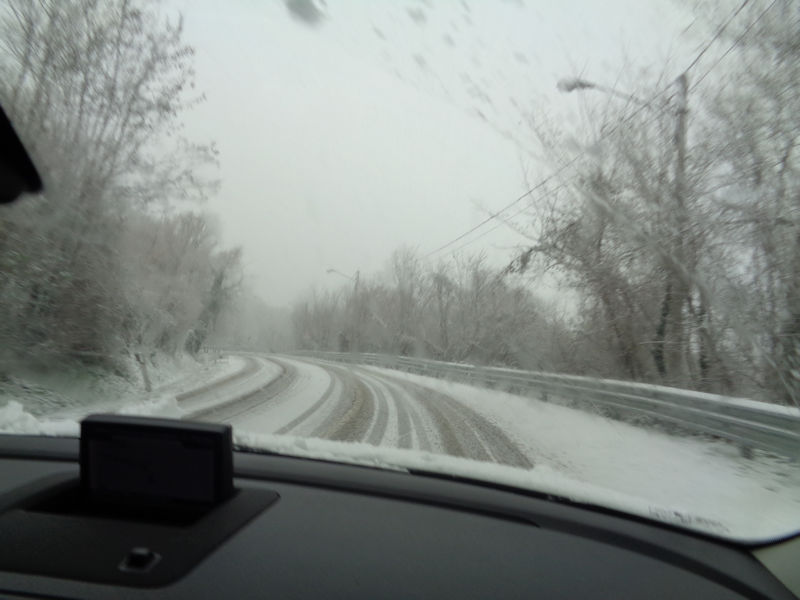
The fastest way for us out of San Marino is over the top, but, well . . .

We'll be starting back downhill soon. Longiano, a hilltop commune in the Province of Forlì-Cesena, the region of Emilia-Romagna, is only about 15km north of San Marino.
Longiano

And here we are in downtown Longiano on a rather grim day. The town sits on a hill on the edge of the Rubicon Valley on the state road from Cesena to Rimini, which basically follows the Roman road the Via Emilia towards Bologna and Piacenza.
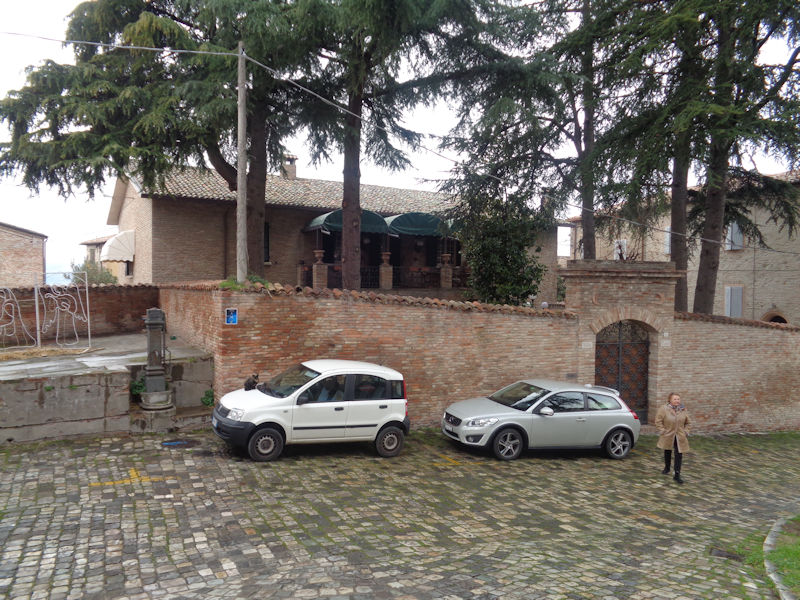
We've arrived earlier than expected and will have a walk round till our hosts get home.
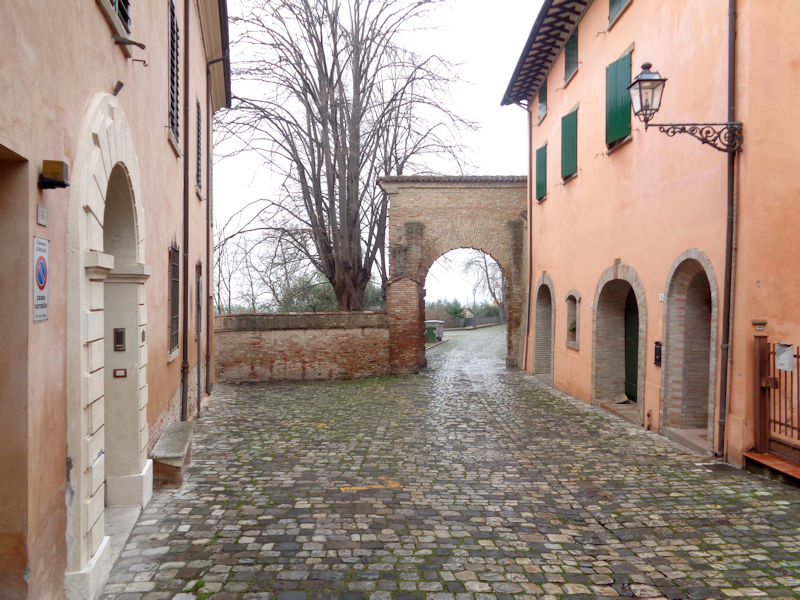
The walk into town, around the castle hill up on the right

This is a tunnel dug straight through the hill under the formidable Castello Malatestiano, in order to protect the populace from bombing raids, a Rifugio bellico, as they've labeled it.
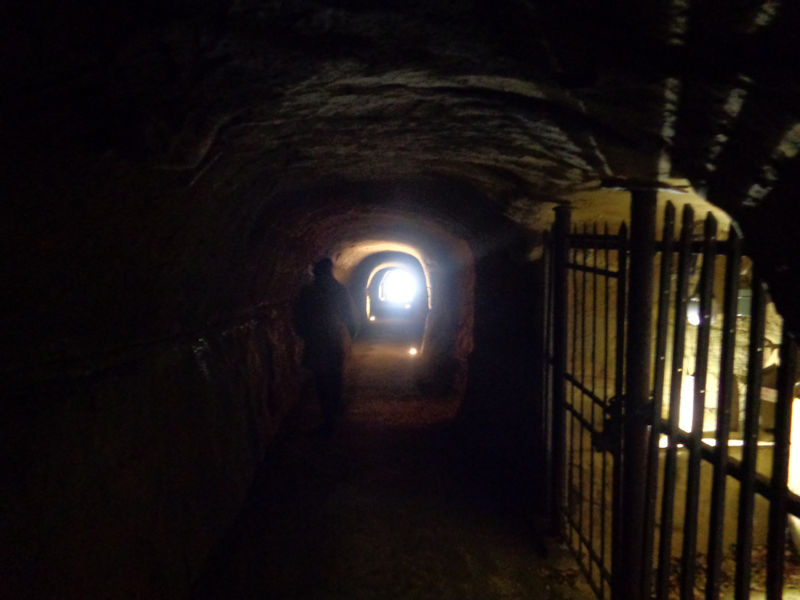
Alcoves are dug out all along the single 100-meter tunnel, each for one of the families in town.
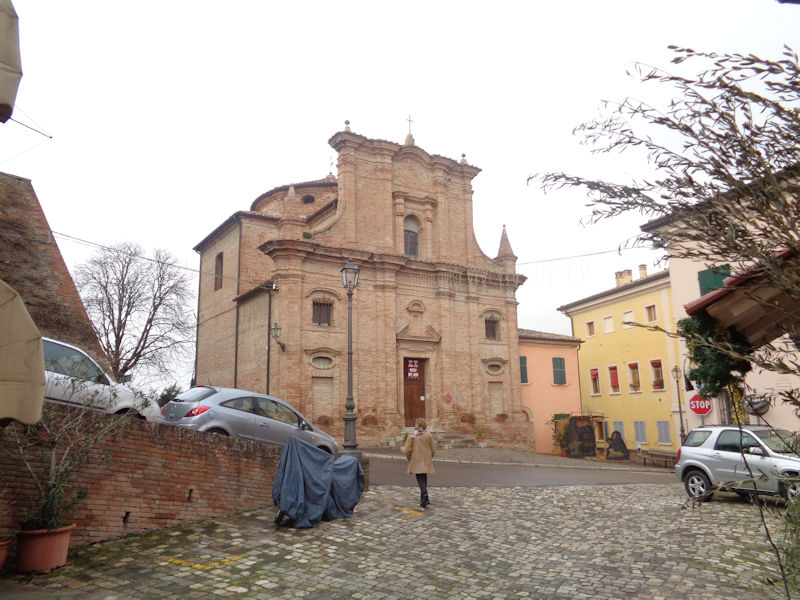
That's the decommissioned Oratorio di San Giuseppe Nuovo, completed in 1728 and now the Museum of Sacred Art inaugurated in 1989 and operated by the commune and the diocese. We're at the end of the high street, the Borgo Fausto, at the foot of the castle bastions.
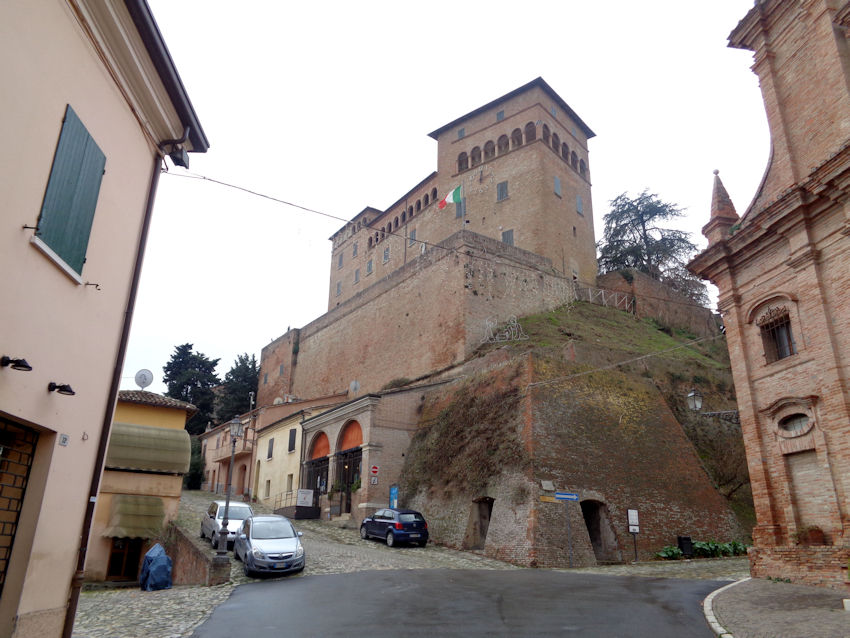
The Castello Malatestiano. There was a stronghold here apparently from the time of the Lombard invasion of the late 6th century AD, and a more important castle on the hill, to resist barbarian raids, is documented from 1059. It saw action as part of a strategic Riminesi defensive line of castles and was attacked several times by Cesena during the 12th century hostilities between those two cities. The Malatestas of Rimini dominated the region subsequently and expanded the fortifications during their administration here from 1290 to 1463.

The Borgo Fausto high street, with the red awning of the restaurant the Osteria del Borgo, where we dined contentedly for several nights.
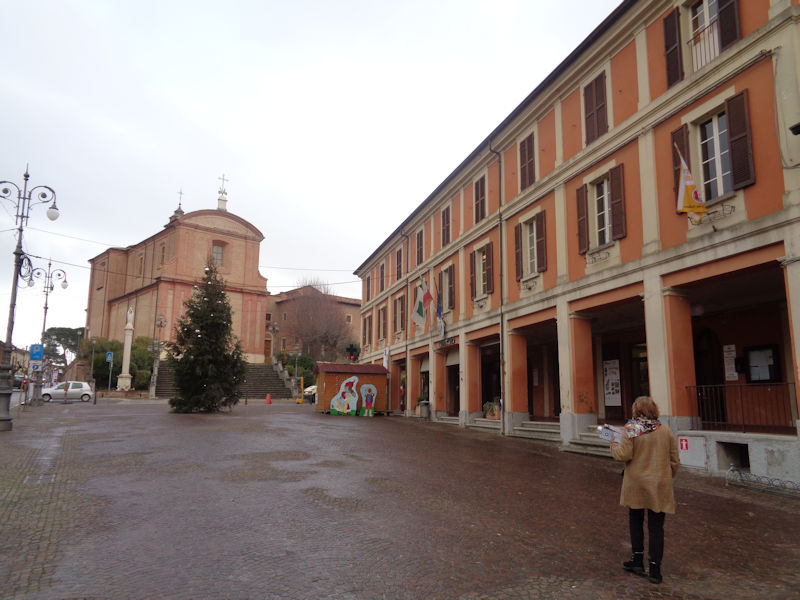
Farther up the street, the Piazza Tre Martiri and the Santuario SS. Crocifisso. Desperate for some lunch, we've been told that there is a piadineria here, and there is, on the back side of this city hall and mini-mall; very good piadini and they made up a big order of cappelletti to take home with us a few days hence.
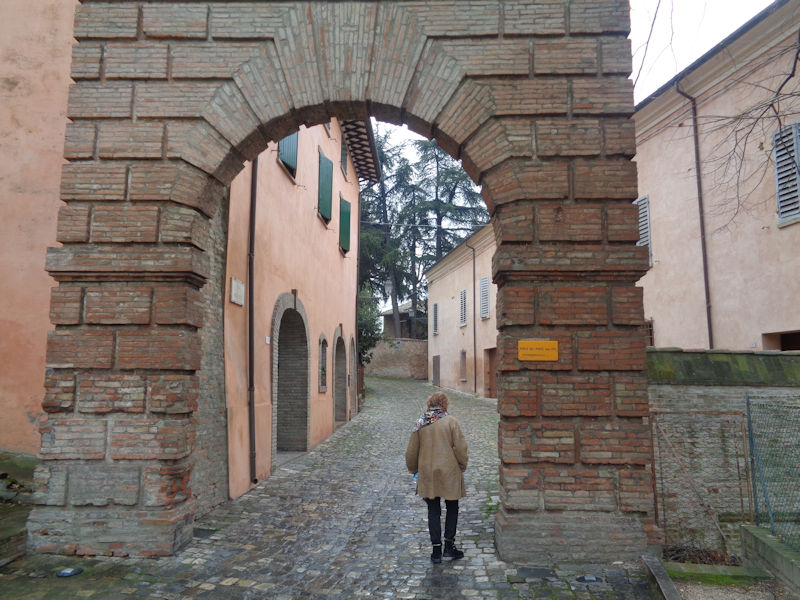
Back to see if our hosts have arrived. During those Rimini-Cesena difficulties, the Cesenati destroyed the castle here in 1198, and in 1199 the Longianesi joined up with Rimini formally and got help for rebuilding it, so that in 1216 they repulsed another attack and joined in the defeat of Cesena's forces nearby. Longiano fell to the Malatesta dynasty of Rimini in 1290, and in 1297 a good part of town was burnt down by a consortium of local cities displeased with Malatesta ambitions -- and thus the Malatestas set about strengthening the castle. In 1387 the Longianesi fought off an attack by the Ordelaffi rulers of Forlì, and in 1429 the condottiere Carlo I Malatesta, lord of Rimini, died in the castle.
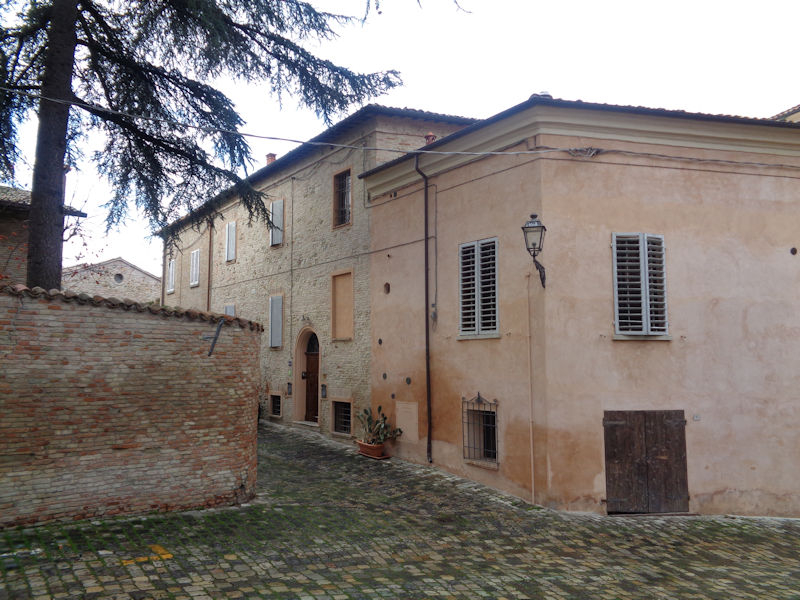
We're here: The Residenza Corte dei Turchi in the 16th century Palazzo Turchi.
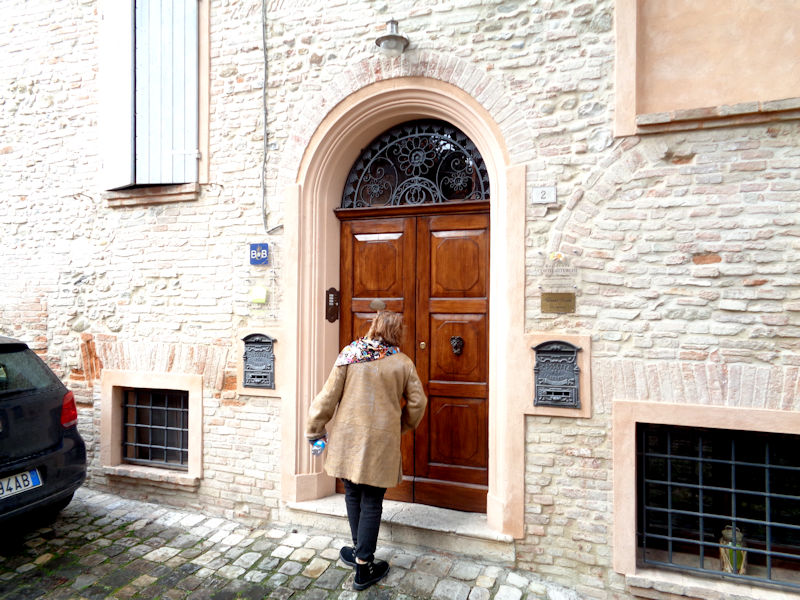
The Corte dei Turchi really has been in the hands of the family of Turkish origin from all those years ago, and they now have properties around the area, with agritourism facilities and a clientele for their especially fine olive oil.

Our flat, very reasonably priced, with a sizeable living room / kitchen and a bedroom, a common salon next door, and a breakfast room opening onto the courtyard downstairs.

Melvin's first reflex in a new environment: hide.


It's time to check out the castello. In 1463, papal forces under the command of Federico da Montefeltro, Lord (later Duke) of Urbino, routed the armies under Sigismondo Pandolfo Malatesta and his kin and ended Malatesta domination in Romagna and Marche, which came under direct papal jurisdiction governed by papal vicars. In 1503, when the Longianese fathers refused their loyalty to Cesare Borgia's new Duchy of Romagna, his troops sacked the village and burned the city's archives. The Venetians ruled here briefly, but in 1519 the Medici Pope Leo X granted Longiano as a papal fief to Count Guido Rangoni of Modena -- in 1581 the town fell back under direct administration of the Papal States, until Napoleon occupied the Romagna.

A memorial stone here commemorates the contribution of several Longianesi in July 1849 to helping Garibaldi escape from the Austrian army at San Marino and reach the sea at Cesenatico, whence he was able to make his way from Comacchio to the Ligurian coast.

A place d'armes outside the Castello Malatestiano
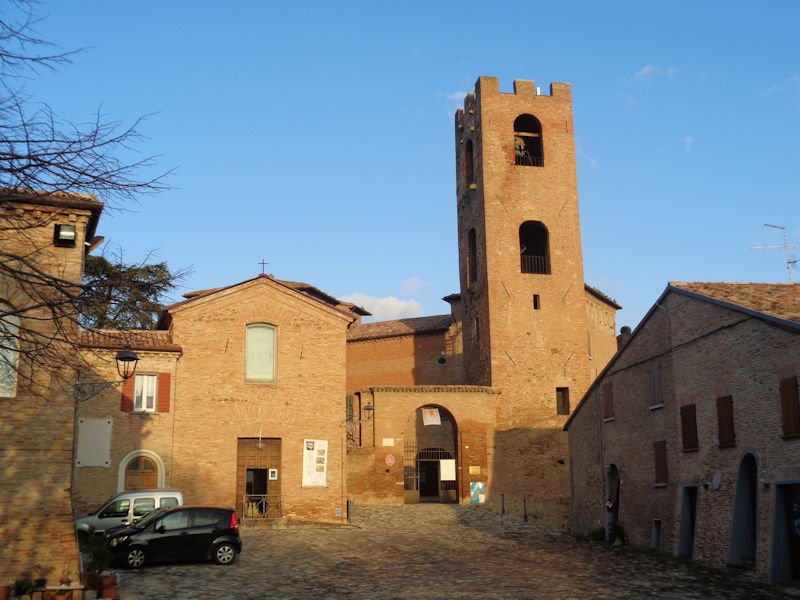
A chapel left-centre and the belltower. The castle served as the town hall until 1989, when it was transformed into a gallery of modern Italian art presented by the Fondazione Tito Balestra.

The castle reopens at 15:00, except when it doesn't, like today. We'll walk all about town for a while and come back.
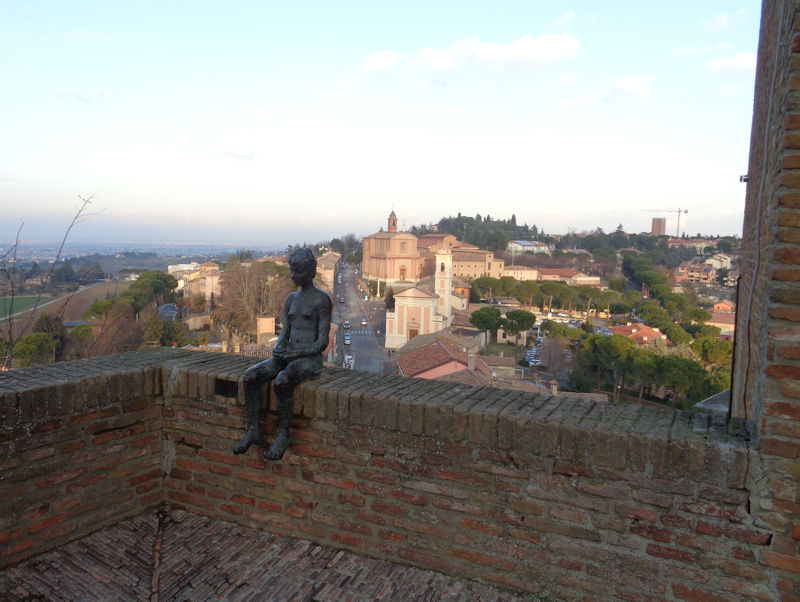
We're not the only ones waiting for the castle/gallery to open.

The Borgo Fausto and two churches from the castle hill
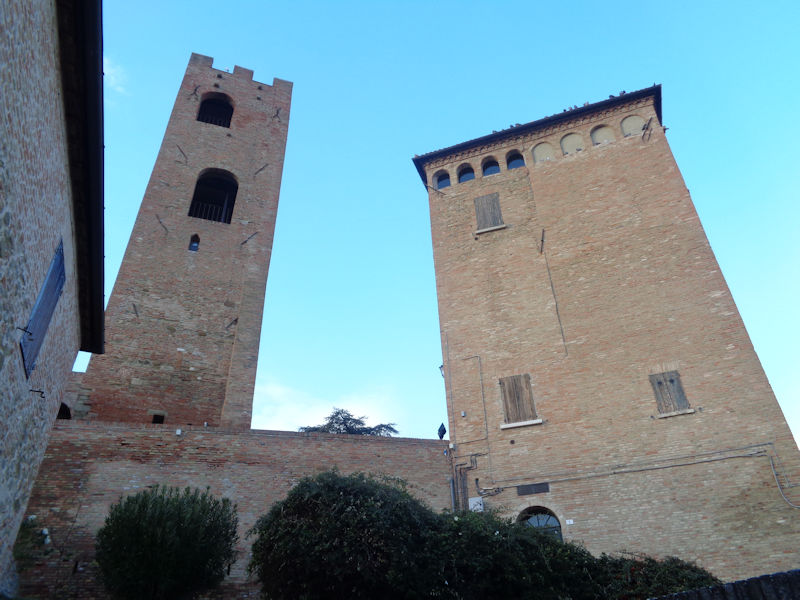
Passing under the towers

Down a stairway from the castle, and back into town
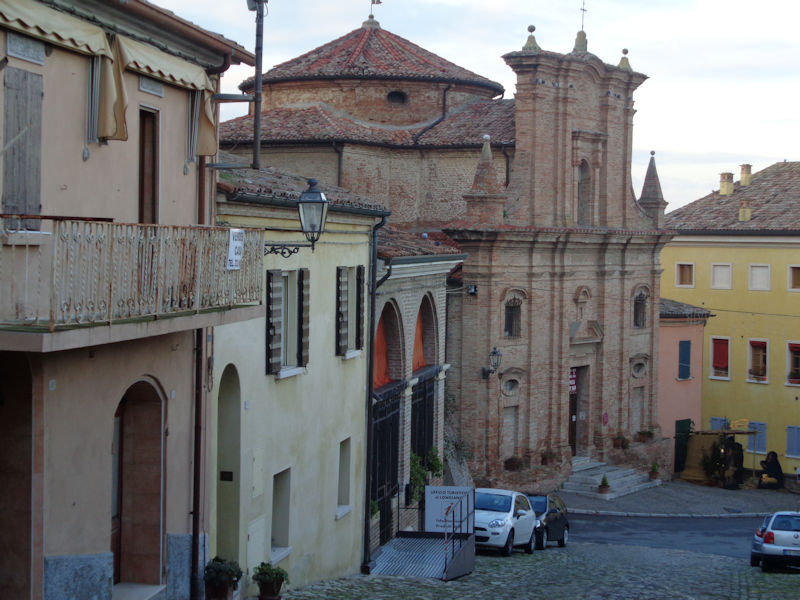
The Museum of Sacred Art, and in the centre, the Tourist Office, built into the fish market that was made part of the bastion that Count Guido of Modena contributed to the fortifications, as well as the loggias running along the top of the main building.

Up the Borgo Fausto, looking at the somewhat unpromising Parrocchia S. Cristoforo and, behind it, the Santuario SS. Crocifisso.

The Teatro Petrella, inaugurated in 1870 with composer Errico Petrella's opera based on Manzoni's I promessi sposi; it was combined with a cinema after 1905, but was badly wrecked by bombs in World War Two. Restoration to its former grandeur was completed in 1986, and it now presents a vigorous programme of theatre and music involving quite a few big names.
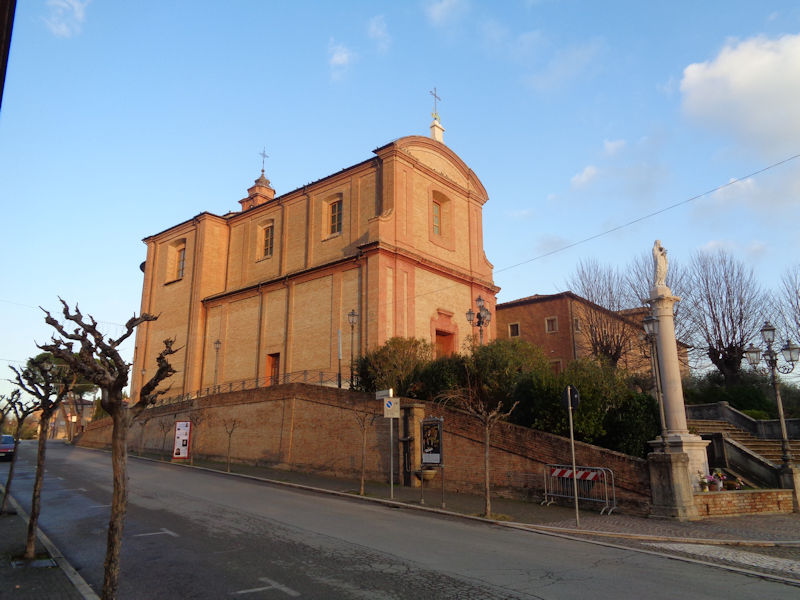
The Santuario SS. Crocifisso replaced the earlier Gothic church which had to be demolished for safety's sake in 1755. This neoclassical successor was consecrated in 1764. It got the daylights blown out of it by a bombing run on 7 October 1944, but was restored as it had been by 1965. The associated convent is on the far side.
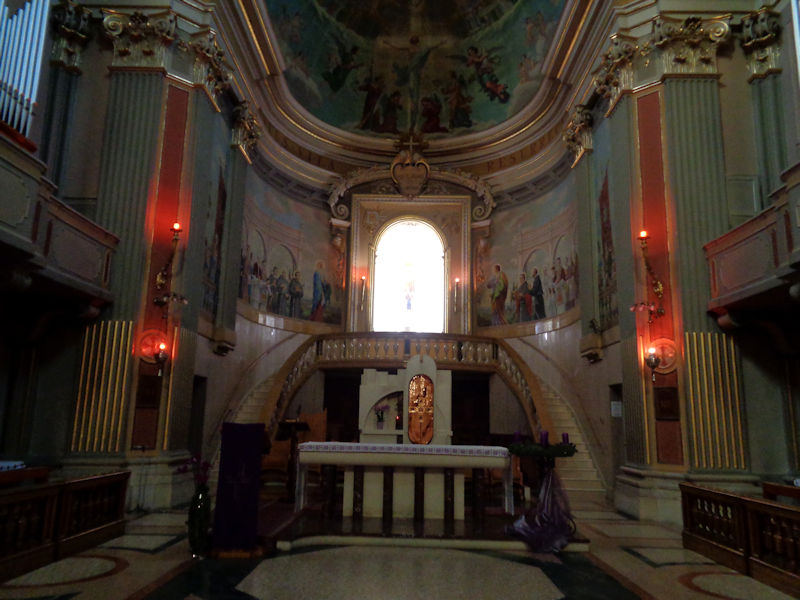
A single nave with tiny chapels on both sides

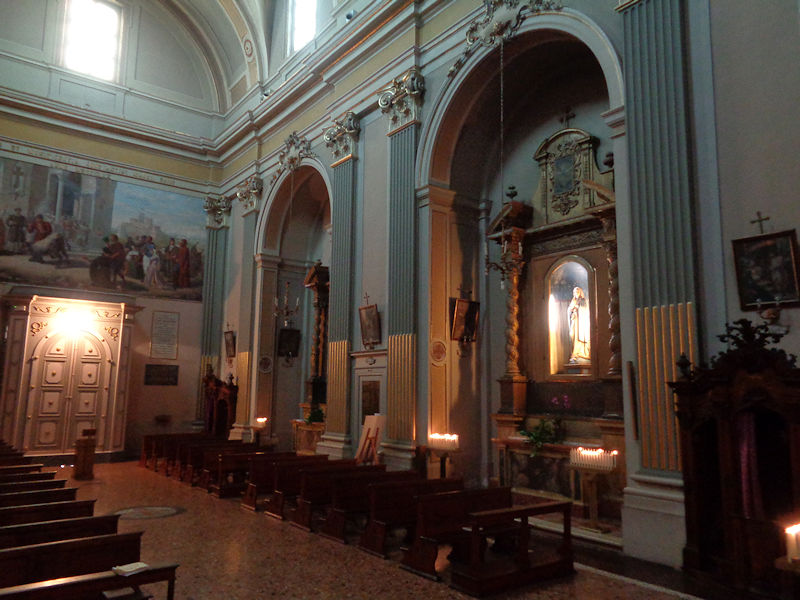

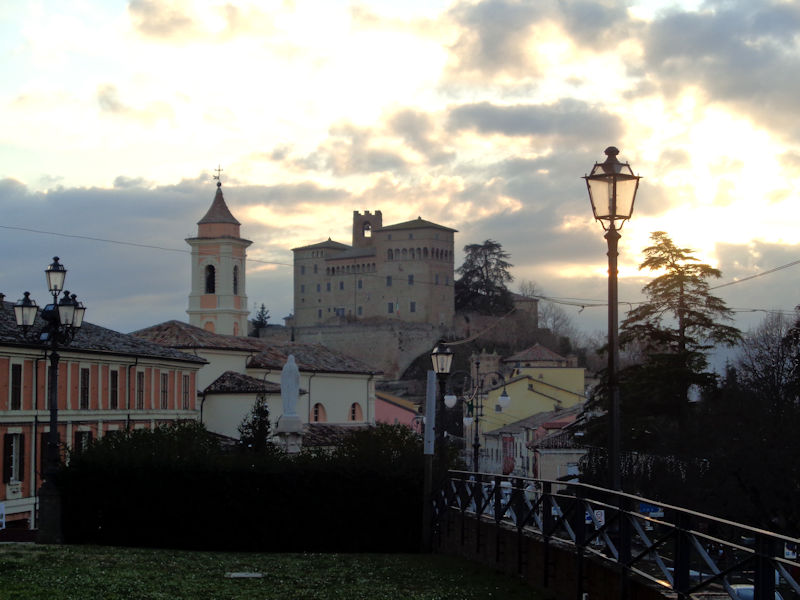
From the Sanctuary, another look at the Castello. It's time to have another try at getting into it.

Further exhibition rooms are upstairs along Count Guido Rangoni's loggia
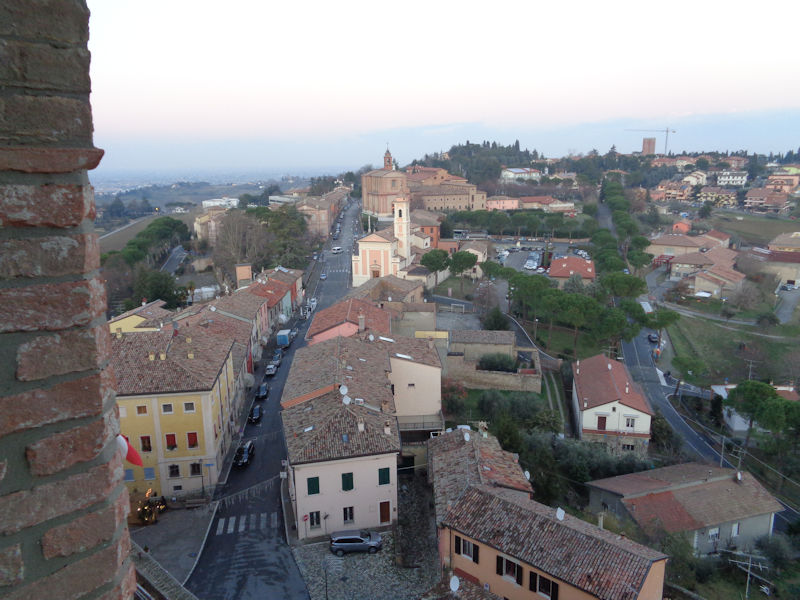
Longiano high street from the loggia

The countryside, looking down onto what the locals blithely refer to as the 'Via Emilia'
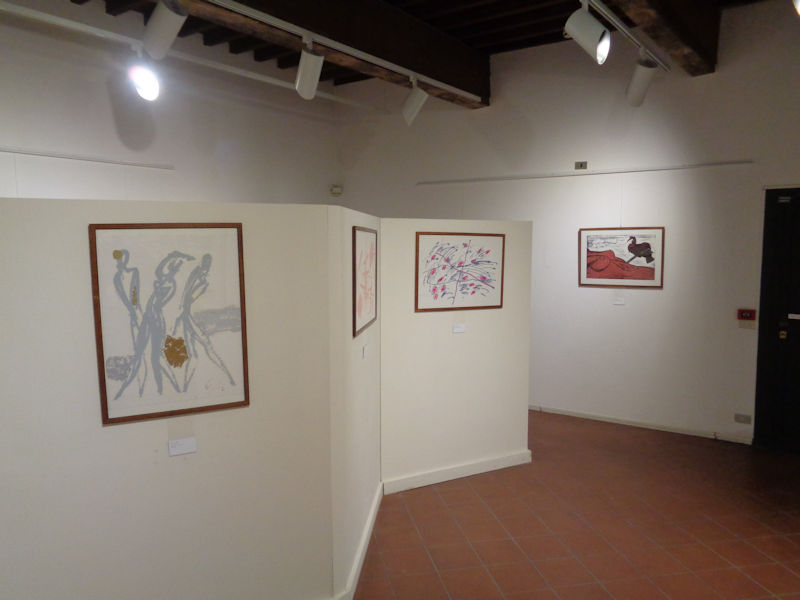
Room 6

The loggia

We're on our way up to Sala 7, mind the step.

Room 7: 'Opere di: Vespignani, Zancanaro'

Renzo Vespignani, Camion in cantiere, 1958
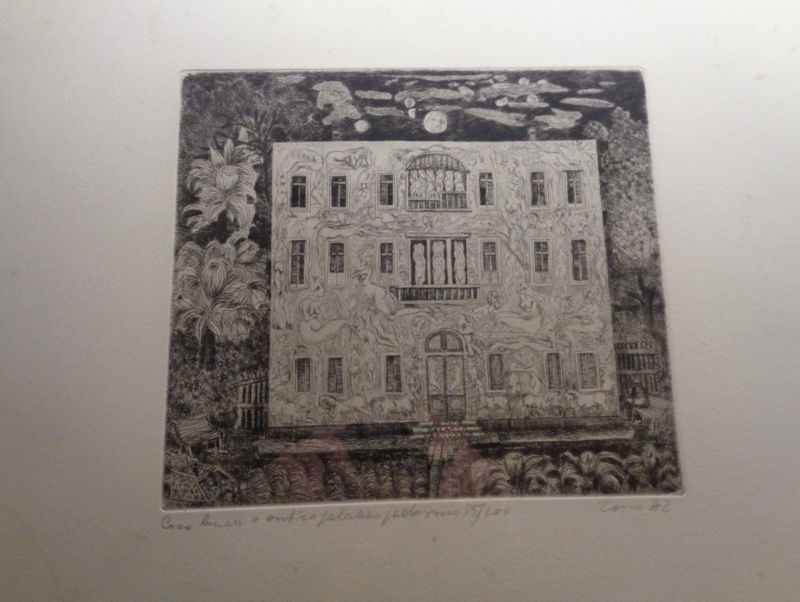
Tono Zancanaro, Antico palazzo padovano, 1942
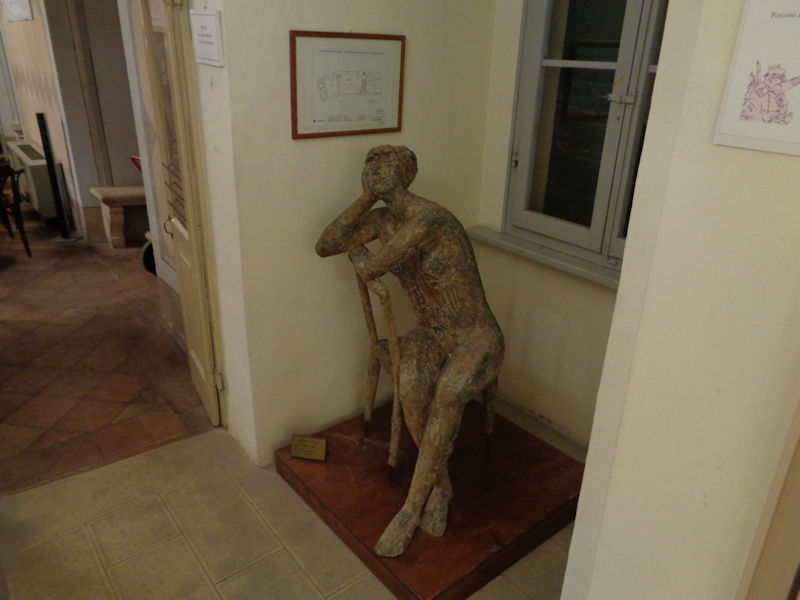
On our way out: Pietro Guida, Seated woman, 1992

As we're leaving, our host rushes out to unlock for us the back of the chapel facing out from the castle precinct.

Yikes! Where's my catalogue raisonné?

The chapel, dedicated to works by Giuseppe Pirozzi

People used to gather to worship here. But they're all long gone now.
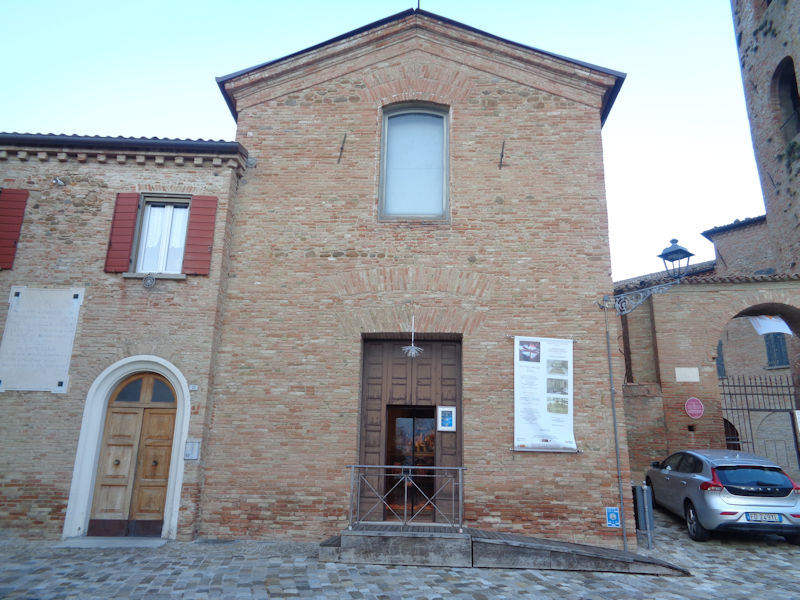
The front door of the chapel (a photo from earlier in the day)
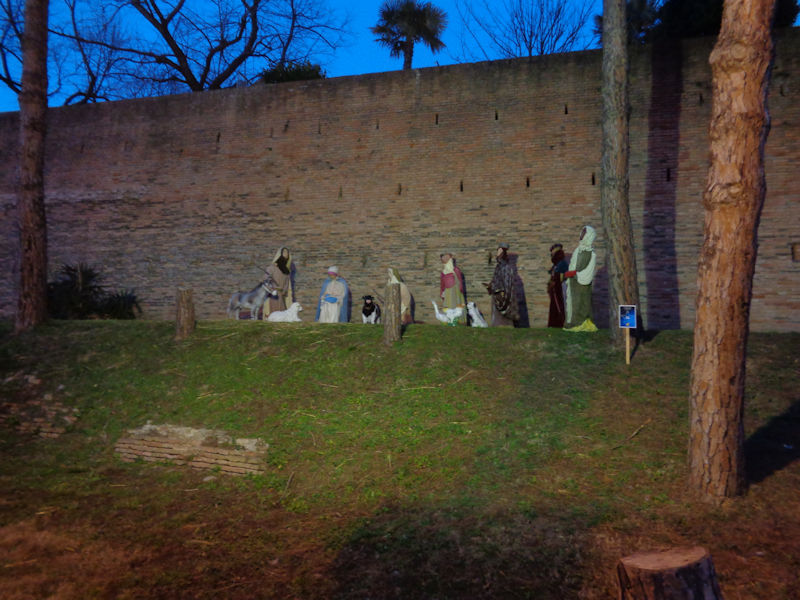
A nativity scene at dusk

After a nice dinner at the Osteria del Borgo, we're back in the little flat in the Corte dei Turchi.


Next: A visit to Cesena

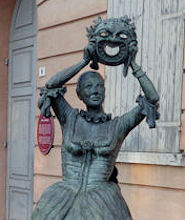 Dwight Peck's personal website
Dwight Peck's personal website











































